Marketing Consumer Behavior: External Influences on DJI Mavic Air 2
VerifiedAdded on 2021/04/21
|5
|977
|38
Report
AI Summary
This report examines the consumer behavior related to the DJI Mavic Air 2 drone, focusing on the external influences impacting its market acceptance in the US. The analysis highlights the roles of culture, subculture, demographics (age, gender, occupation, and income), and group influences (reference groups like photographers and celebrities). The report argues that the US culture's emphasis on materialism and brand recognition, particularly among younger demographics and those with higher incomes, significantly affects purchasing decisions. It also discusses how reference groups and social influences shape consumer choices. The report references several academic sources to support its claims, providing a comprehensive overview of the factors influencing consumer behavior in the drone market.
1 out of 5
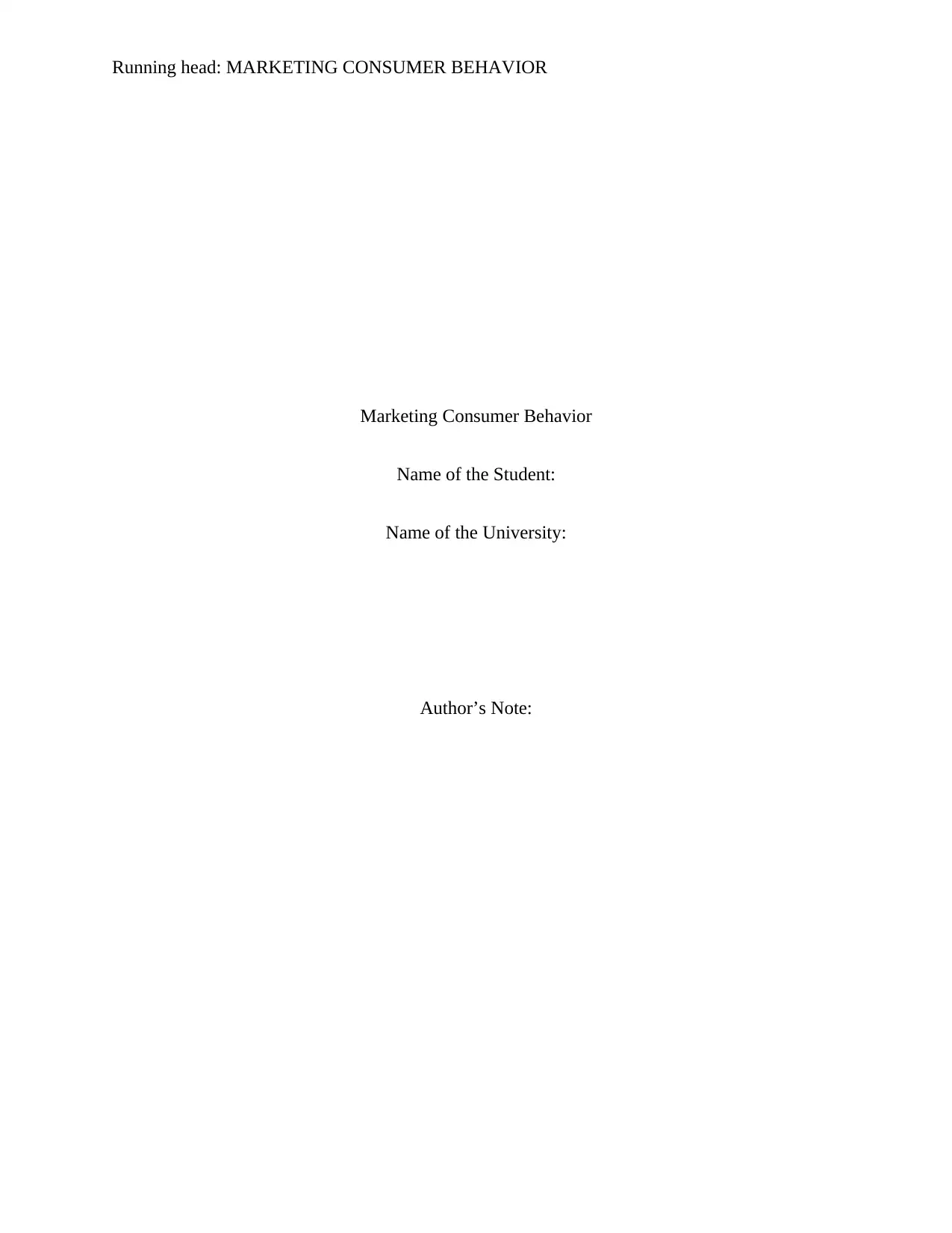
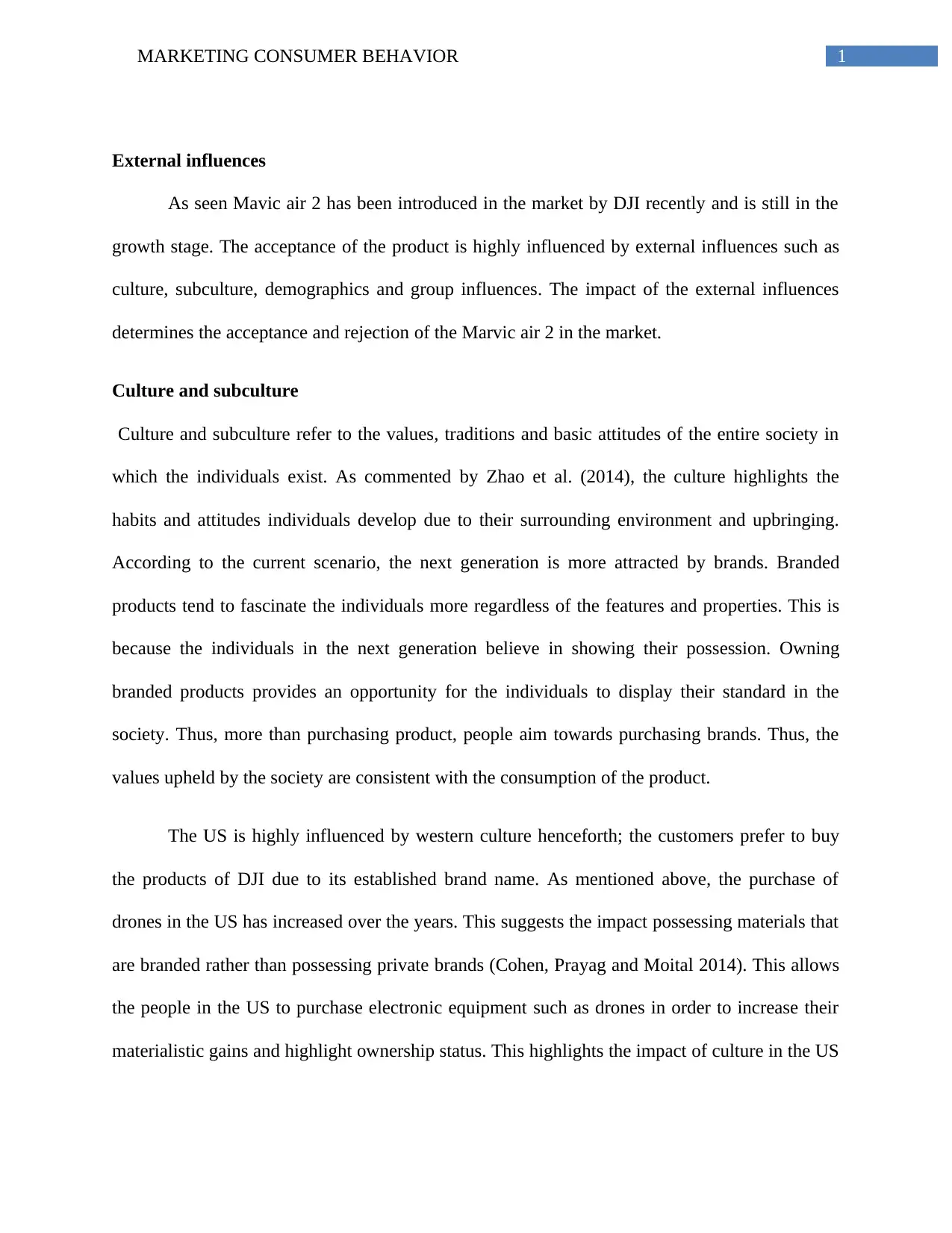
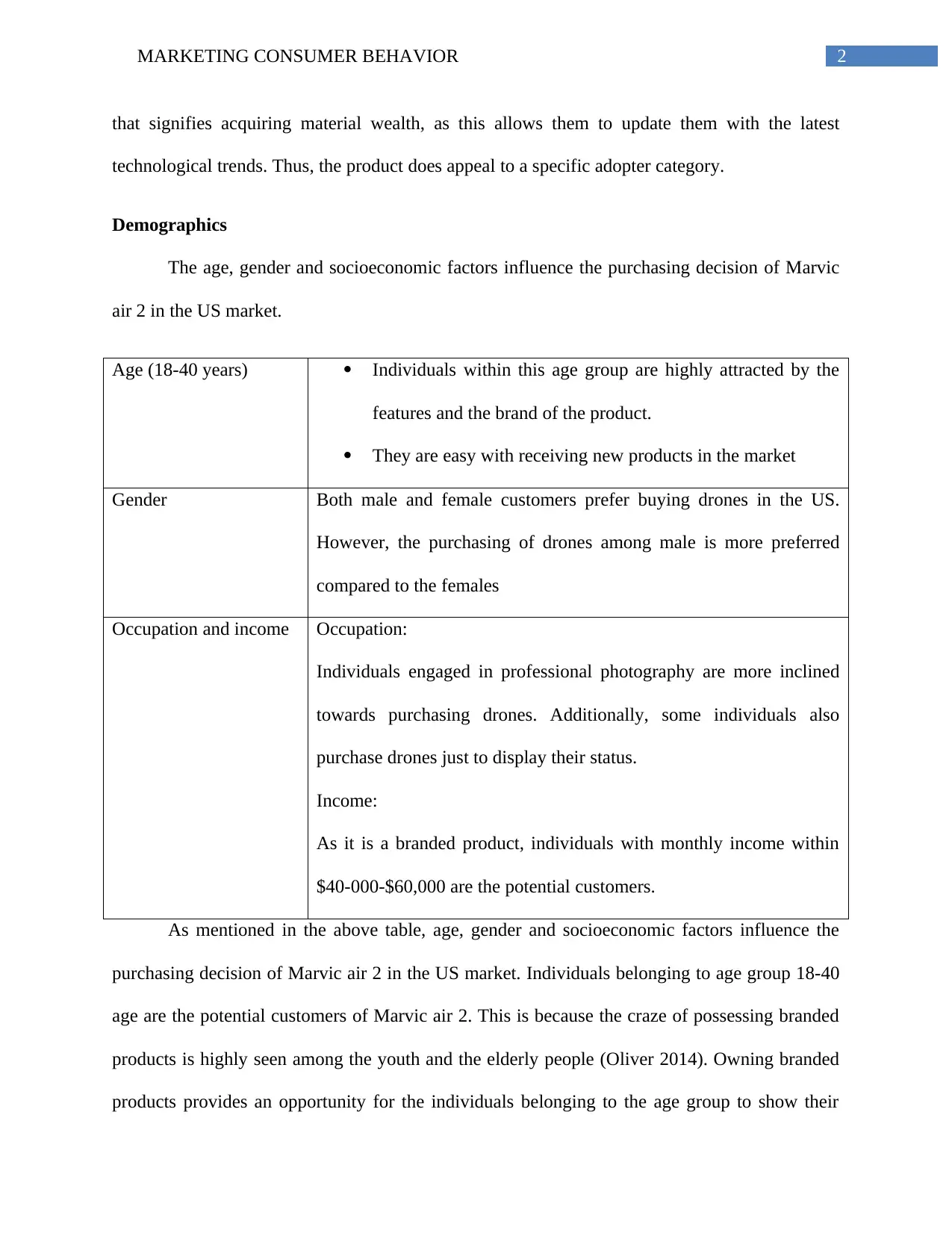
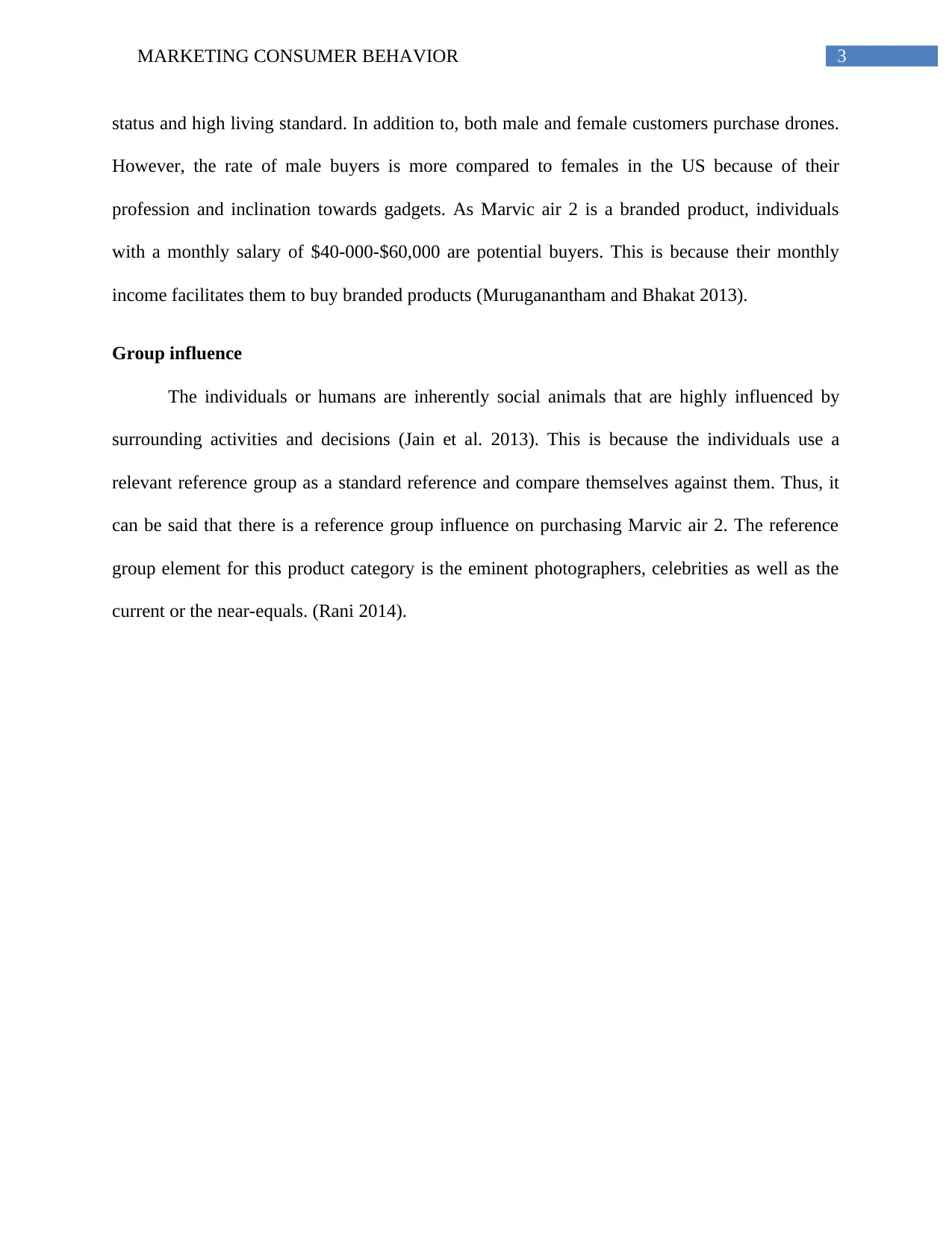
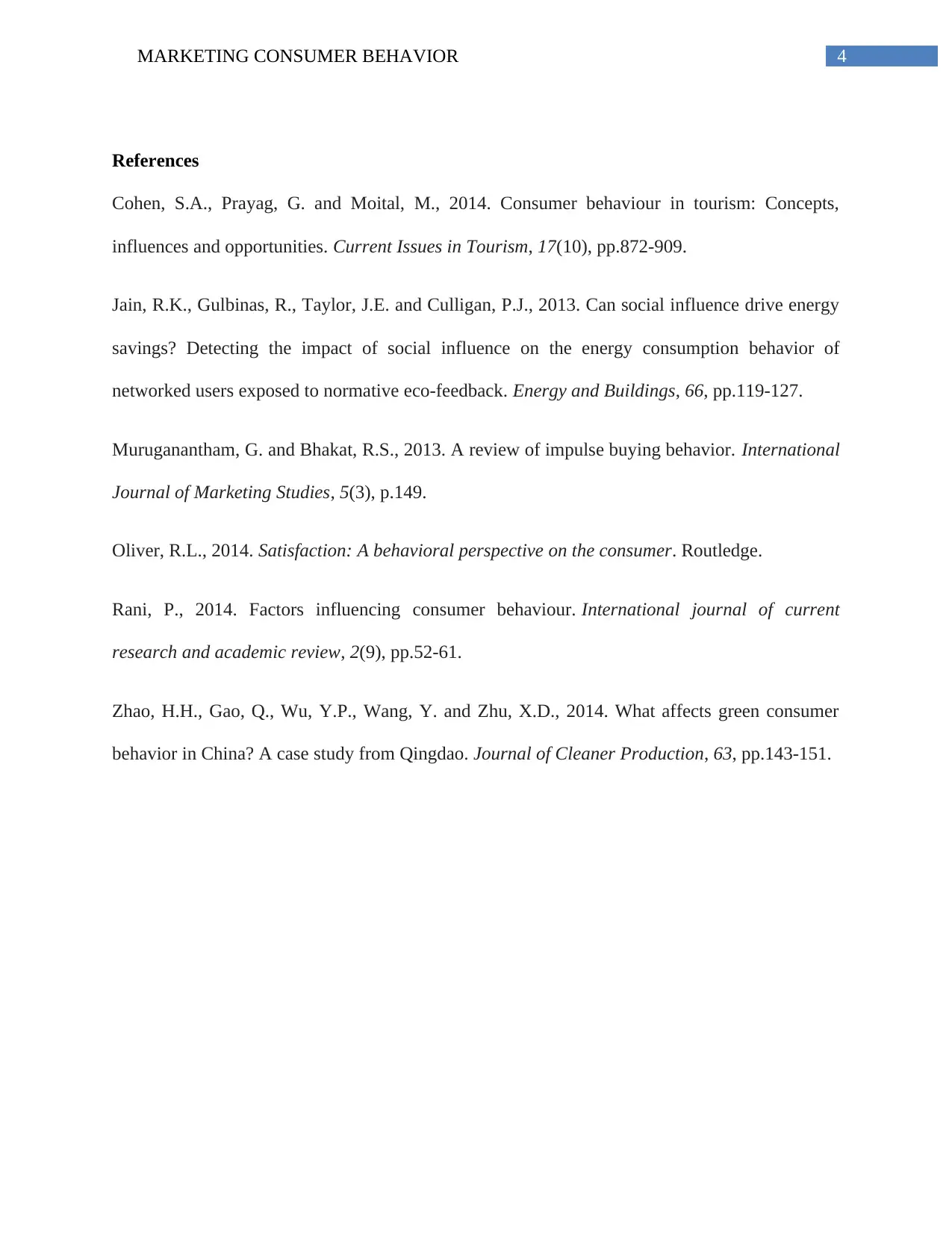





![[object Object]](/_next/static/media/star-bottom.7253800d.svg)